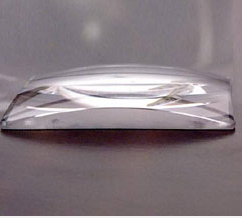Articles and News
REFRESHER COURSE: EXPLAINING WATCH CRYSTAL COSTS TO CUSTOMERS | December 19, 2012 (0 comments)

Randolph, NJ—At some point in their career, most luxury jewelers will be asked to fix a customer’s beloved wristwatch. For those with a robust watch business, it’s all part of a day’s work, but even jewelers who don’t carry watches may be asked for advice.
Among the more common problems is a cracked or chipped crystal, and a customer may be surprised to find out what it costs to fix. Roberta Naas, a longtime industry expert in the field of luxury watches, recently posted this educational blog entry about watch crystals on her website, atimelyperspective.com.
Naas explains the three main types of crystals used in watchmaking: sapphire (most costly, and typical of luxury watches), mineral, and Plexiglas or acrylic crystals.
Sapphire, part of the corundum family, is extremely durable and scratch resistant. In fact, corundum is almost as hard as diamond. Diamond, of course, is the hardest known mineral. Registering 10 on the Mohs scale of hardness, nothing can scratch a diamond but another diamond. Corundum, meanwhile, is a 9, meaning that diamond can scratch it but relatively few other substances can. Most sapphire crystals are made of synthetic sapphire, which is less expensive than natural but has the same properties as its mined counterpart.
Read the complete explanation of all three kinds of watch crystals here.







